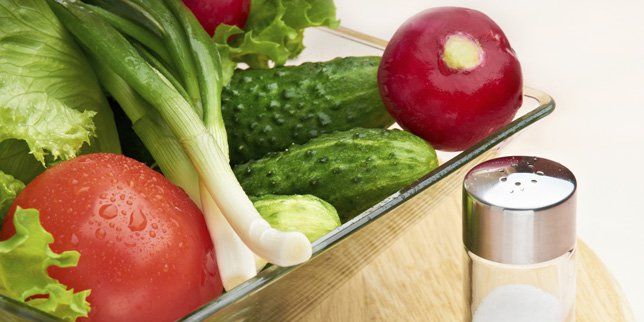BY ASHLEY MATEO
JAN 5, 2018
To be honest, the DASH Diet sounds like something the Kardashians would hawk.
But DASH—which stands for Dietary Approaches to Stop Hypertension—is far from a fad diet. Created by the National Heart, Lung, and Blood Institute (NHLBI), the DASH Diet is designed to improve health in people with high blood pressure, a.k.a. hypertension. (In the U.S., one out of every three adults has high blood pressure, according to the Centers of Disease Control and Prevention.) U.S. News & World Report has named the DASH Diet the best overall diet for the past eight years.
That’s because the DASH Diet has been proven to work, says Reshmi Srinath, M.D., an assistant professor at the Icahn School of Medicine at Mount Sinai. One study found that people who followed the DASH Diet had lower blood pressure and LDL (bad) cholesterol levels than those who consumed a typical American diet or an American diet infused with extra fruits and veggies.
And while the diet wasn't designed with weight loss as a primary goal, it's no secret that many of the nutritional factors that influence blood pressure also influence weight, she says. Think: processed foods, trans fats, and excess sugar. According to one DASH study, adults who who followed the diet lost more weight in a span of eight to 24 weeks than those adhering to other low-calorie diets.
What's On (And Off) the Menu?
So, what is the DASH Diet all about? It's a flexible eating plan that prioritizes whole foods like vegetables, fruits, and whole grains, as well as fat-free or low-fat dairy products, fish, poultry, beans, nuts, and vegetable oils like olive oil—all of which have been linked to improved health, including weight loss.
“Unlike many popular diets, there’s really not a huge focus on eliminating starches,” Srinath says. “What most studies have found is that dieting is really about sustainability—so the people who lose the most weight are those who are able to maintain a diet and keep up with it," she says. "A big issue with a lot of the low-carb diets out there is that it’s really, really hard to limit carbs completely. That’s why I think DASH is more palatable to people." Yaaas, carbs!
The only limitations: processed foods, and excess intake of fats, sugars, and sodium. And, yes, nixing processed foods pretty much takes care of the fat, sugar, and sodium problem, Srinath says. Research published in BMJ Journal shows that ultra-processed foods make up 58 percent of all of the calories and 90 percent of the added sugars that the average American consumes in a given day. And 75 percent of the average American’s sodium consumption (which is about 1.5 times the RDA of sodium per day, according to the Centers for Disease Control and Prevention) comes from processed foods, per Harvard University.
“Excess salt—which is found in the majority of processed foods—can lead to high blood pressure, heart disease, and stroke,” says Srinath. “Lowering the amount of salt in your diet can reduce those risks, which is what this diet was originally designed to do.”
But again, when it comes to salt, there's a blood pressure-weight link that can't go ignored. A diet rich in sodium may lead to the development of obesity, according to one study, and salty foods are more likely to promote overeating, which obviously also leads to weight gain, per another study. And by now, it's more than evident that excess fat and sugar intake can contribute to caloric surpluses, blood sugar and insulin spikes, inflammation, and, yes, more weight gain, she says.
If you’re moderately active and between 19 and 51, the DASH Diet recommends following a 2,000-calorie-per-day diet that breaks down like this:
- Grains: 6-8 servings per day
- Meats, poultry, and fish: 6 or fewer servings per day
- Vegetables: 4-5 servings per day
- Fruit: 4-5 servings per day
- Low-fat or fat-free dairy products: 2-3 servings per day
- Fats and oils: 2-3 servings per day
- Nuts, seeds, dry beans, and peas: 4-5 servings per week
- Sweets: 5 or fewer servings per week
- Sodium: 2,300 mg per day











